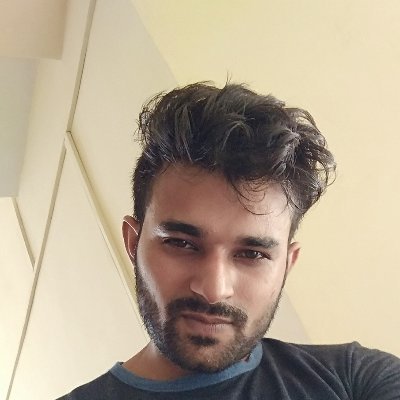Research methodology is the backbone of any academic research. It is the systematic way of investigating, collecting, analysing, and interpreting information to answer research questions or test hypotheses. For pre-PhD students, understanding research methodology is crucial as it lays the foundation for their future research endeavours. In this guide, we will walk you through the key steps involved in learning research methodology in a clear and understandable manner.
Step 1: Understanding the Basics
Understanding the basics of research methodology is like building the foundation of a strong building. Just as a building needs a solid base to stand tall, your research needs a solid understanding of key concepts to be successful.
Research methodology is all about how you go about finding answers to your research questions. It involves a series of steps, starting from identifying your research question to analyzing your data and drawing conclusions. To understand research methodology, you need to grasp concepts such as research design, types of research, sampling methods, data collection techniques, and data analysis methods.
Imagine you are embarking on a journey to explore an unknown land. Your research question is like your destination – it guides your journey and determines the path you take. Research design is like your map – it outlines the route you will follow to reach your destination. Sampling methods are like the people you meet along the way – they represent the subset of the population you will study. Data collection techniques are like the tools you use to gather information – they help you collect data from your surroundings. And data analysis methods are like the compass that helps you make sense of the information you have gathered – they guide you in interpreting your findings.
By understanding these basic concepts, you will be better equipped to navigate the world of research methodology. So, grab your map, gather your tools, and embark on your research journey with confidence!
Definition: Research methodology is the process used to collect and analyse data needed to answer a research question.
Key Concepts: Familiarise yourself with key concepts such as research design, types of research, sampling methods, data collection techniques, and data analysis methods.
Resources: Read textbooks, attend lectures, and engage in discussions with peers and mentors to deepen your understanding of these concepts.
Step 2: Formulating a Research Question
Formulating a research question is like setting sail on a voyage of discovery. Just as a sailor must chart a course before setting out to sea, a researcher must define their question before embarking on their research journey.
Imagine you are a detective trying to solve a mystery. Your research question is like the puzzle you are trying to piece together. It should be clear, specific, and focused, guiding your investigation in the right direction. For example, instead of asking a broad question like "How does technology affect society?", you could ask a more specific question like "What are the social impacts of smartphones on teenagers in urban areas?"
A good research question should also be relevant and meaningful. It should address an issue or problem that is important to you and to society. Think about what motivates you to explore this topic and why it matters. Your question should also be feasible, meaning that it is realistic and achievable given your time, resources, and expertise.
To formulate a research question, start by identifying a topic that interests you. Then, think about what aspect of that topic you want to explore further. Consider what you already know about the topic and what gaps in knowledge exist. Your research question should aim to fill one of these gaps, contributing something new and valuable to the field.
By formulating a clear, relevant, and feasible research question, you will set yourself up for a successful research journey, full of discovery and insight.
Importance: A well-defined research question guides your research and helps you stay focused on your objectives.
Criteria: A good research question should be clear, concise, relevant, and feasible.
Example: "What is the impact of social media on youth behaviour?"
Step 3: Choosing a Research Design
Choosing a research design is like selecting the blueprint for your study. Just as an architect carefully selects the design that best suits a building's purpose, a researcher must choose a research design that aligns with their research question and objectives.
Imagine you are an architect designing a new building. Your research question is like the purpose of the building – it determines the design that will best serve your needs. For example, if your research question is about the effectiveness of a new teaching method, you might choose an experimental research design to compare the outcomes of students who receive the new method versus those who do not.
Research designs can be broadly classified into three main types: experimental, correlational, and descriptive. Experimental designs are used to study cause-and-effect relationships by manipulating one or more variables and observing the effects. Correlational designs are used to examine relationships between variables without manipulating them. Descriptive designs are used to describe characteristics of a population or phenomenon.
To choose a research design, start by considering your research question and objectives. If your goal is to determine causality, an experimental design may be appropriate. If you want to explore relationships between variables, a correlational design may be more suitable. If you simply want to describe a phenomenon, a descriptive design may be the best choice.
Next, consider practical factors such as time, resources, and access to participants. Experimental designs, for example, often require more time and resources than correlational or descriptive designs. Think about what is feasible given your constraints.
Finally, think about the ethical implications of your research design. Ensure that your design respects the rights and well-being of your participants and follows ethical guidelines.
By choosing a research design that aligns with your research question, objectives, and practical constraints, you will set yourself up for a successful and meaningful study. Just as a well-designed building stands the test of time, a well-designed research study can make a lasting impact in your field.
Types: Familiarise yourself with different research designs such as experimental, correlational, and descriptive.
Selection: Choose a research design that aligns with your research question and objectives.
Example: For the research question mentioned earlier, a correlational research design may be suitable.
Step 4: Sampling Methods
Sampling methods in research methodology are like the ingredients you choose for a recipe. Just as a chef selects the best ingredients to create a delicious dish, a researcher selects the best sampling method to ensure their study is representative and valid.
Imagine you are a chef preparing a meal for a large group of people. Your sampling method is like the way you select your ingredients – it should be carefully chosen to ensure that your meal is well-balanced and flavorful. Similarly, in research, your sampling method should be chosen to ensure that your sample accurately represents the population you are studying.
There are several sampling methods used in research, each with its own strengths and weaknesses. Random sampling, for example, is like picking ingredients blindly from a pantry – it ensures that every member of the population has an equal chance of being selected. This method is useful when you want to generalize your findings to the entire population.
Stratified sampling is like dividing your ingredients into categories and then selecting a proportional amount from each category. This method is useful when you want to ensure that certain groups are represented in your sample.
Convenience sampling is like using whatever ingredients are easiest to find – it is quick and easy but may not be representative of the population. This method is often used in exploratory research or when resources are limited.
Choosing the right sampling method depends on several factors, including the research question, the population being studied, and the resources available. It is important to carefully consider these factors when selecting a sampling method to ensure that your study is valid and reliable.
In addition to selecting a sampling method, researchers must also consider the sample size – the number of participants included in the study. The sample size should be large enough to ensure that the findings are statistically significant but small enough to be manageable.
By selecting the appropriate sampling method and sample size, researchers can ensure that their study is both rigorous and relevant, leading to meaningful and impactful findings. Just as a well-prepared meal can delight the senses, a well-designed study can advance knowledge and understanding in a particular field.
Purpose: Sampling methods help you select a subset of the population for your study.
Types: Learn about different sampling methods such as random sampling, stratified sampling, and convenience sampling.
Example: For a study on youth behaviour, convenience sampling may be used to select participants from a local community.
Step 5: Data Collection Techniques
Data collection techniques in research methodology are like tools in a toolbox. Just as a carpenter selects the right tool for the job, a researcher selects the right data collection technique to gather the information needed to answer their research question.
Imagine you are a carpenter building a piece of furniture. Your data collection technique is like the tool you use to shape the wood – it should be chosen carefully to ensure that you collect accurate and reliable data. Similarly, in research, your data collection technique should be chosen to ensure that you gather the information you need to answer your research question.
There are several data collection techniques used in research, each with its own strengths and weaknesses. Surveys, for example, are like using a tape measure to gather precise measurements – they allow you to collect a large amount of data from a large number of people. Surveys can be conducted in person, over the phone, through the mail, or online.
Interviews are like using a chisel to carve intricate details – they allow you to gather detailed information from individual participants. Interviews can be structured, semi-structured, or unstructured, depending on the level of flexibility needed.
Observations are like using a magnifying glass to examine details up close – they allow you to gather data by watching people or events in their natural environment. Observations can be participant observations, where the researcher actively participates in the situation being observed, or non-participant observations, where the researcher remains separate from the situation.
Experiments are like using a power tool to quickly and efficiently complete a task – they allow you to manipulate variables and observe the effects on outcomes. Experiments can be conducted in a laboratory setting or in the field.
Choosing the right data collection technique depends on several factors, including the research question, the nature of the phenomenon being studied, and the resources available. It is important to carefully consider these factors when selecting a data collection technique to ensure that you gather high-quality data that can be used to answer your research question.
In addition to selecting a data collection technique, researchers must also consider issues of validity and reliability. Validity refers to whether the data collected actually measures what it is intended to measure, while reliability refers to the consistency of the data over time and across different observers. By carefully selecting data collection techniques and ensuring validity and reliability, researchers can gather high-quality data that can be used to answer their research questions and contribute to the body of knowledge in their field.
Methods: Explore various data collection techniques such as surveys, interviews, observations, and experiments.
Selection: Choose a data collection technique that is appropriate for your research design and objectives.
Example: For the research question on social media impact, surveys or interviews may be used to collect data from youth.
Step 6: Data Analysis Methods
Data analysis methods in research methodology are like tools in a scientist's laboratory. Just as a scientist uses different tools to analyze substances and uncover their properties, a researcher uses different data analysis methods to uncover patterns and relationships in their data.
Imagine you are a scientist studying a new substance. Your data analysis method is like the technique you use to analyze the substance – it should be chosen carefully to ensure that you uncover the information you need to answer your research question. Similarly, in research, your data analysis method should be chosen to ensure that you analyze your data in a way that is appropriate for your research question and objectives.
There are several data analysis methods used in research, each with its own strengths and weaknesses. Descriptive statistics, for example, are like using a microscope to examine the characteristics of a substance – they allow you to summarize and describe your data in a meaningful way. Descriptive statistics can include measures such as mean, median, mode, and standard deviation, which help you understand the central tendency and variability of your data.
Inferential statistics are like using a spectrometer to analyze the composition of a substance – they allow you to make inferences and draw conclusions about a population based on a sample of data. Inferential statistics can include techniques such as hypothesis testing and confidence intervals, which help you determine whether the differences or relationships observed in your sample are likely to occur in the larger population.
Qualitative analysis is like using a microscope to examine the structure of a substance – it allows you to analyze non-numerical data such as text, images, or videos to uncover themes, patterns, and meanings. Qualitative analysis can include techniques such as thematic analysis, content analysis, and narrative analysis, which help you make sense of complex data.
Choosing the right data analysis method depends on several factors, including the nature of your data, the research question, and the research design. It is important to carefully consider these factors when selecting a data analysis method to ensure that you analyze your data in a way that is valid and reliable.
In addition to selecting a data analysis method, researchers must also consider issues of validity and reliability. Validity refers to whether the data analysis accurately reflects the data collected, while reliability refers to the consistency of the data analysis over time and across different observers. By carefully selecting data analysis methods and ensuring validity and reliability, researchers can analyze their data in a way that provides meaningful insights and contributes to the body of knowledge in their field.
Purpose: Data analysis helps you make sense of the data collected and draw meaningful conclusions.
Techniques: Learn about statistical techniques such as descriptive statistics, inferential statistics, and qualitative analysis.
Example: Statistical analysis can be used to analyse survey responses and identify trends in youth behaviour.
Step 7: Reporting and Presenting Findings
Reporting and presenting findings in research methodology are like telling a story to your audience. Just as a storyteller uses different techniques to engage their listeners, a researcher uses different strategies to effectively communicate their findings to their audience.
Imagine you are a storyteller sharing a tale with your audience. Your research findings are like the plot of your story – they should be presented in a clear and engaging way to capture the interest of your audience. Similarly, in research, your findings should be presented in a way that is clear, concise, and meaningful to your audience.
There are several strategies for reporting and presenting findings in research, each with its own strengths and weaknesses. Written reports, for example, are like writing a novel – they allow you to provide a detailed and comprehensive account of your findings. Written reports typically include an introduction, methodology, results, and discussion, and may also include tables, graphs, and charts to illustrate key findings.
Oral presentations are like telling a story aloud – they allow you to verbally communicate your findings to your audience. Oral presentations can be formal, such as a conference presentation, or informal, such as a group discussion. They often include visual aids such as slides or posters to enhance understanding.
Visual representations are like using illustrations to accompany your story – they allow you to present your findings in a visual and engaging way. Visual representations can include tables, graphs, charts, and diagrams, which help you communicate complex information quickly and effectively.
Choosing the right strategy for reporting and presenting findings depends on several factors, including the nature of your research, your audience, and your objectives. It is important to consider these factors when selecting a strategy to ensure that your findings are communicated in a way that is meaningful and impactful.
In addition to selecting a strategy, researchers must also consider issues of clarity and transparency. Clarity refers to the ease with which your findings can be understood by your audience, while transparency refers to the openness and honesty with which your findings are presented. By ensuring clarity and transparency in reporting and presenting findings, researchers can effectively communicate their findings and contribute to the body of knowledge in their field.
Format: Write a research report following the standard format of introduction, methodology, results, and discussion.
Presentation: Present your findings in a clear and concise manner using tables, graphs, and charts.
Example: Present the impact of social media on youth behaviour with statistical data and supporting evidence.
Research methodology is a systematic process that requires careful planning and execution. By following these steps, pre-PhD students can learn how to conduct research effectively and contribute to the body of knowledge in their field.



